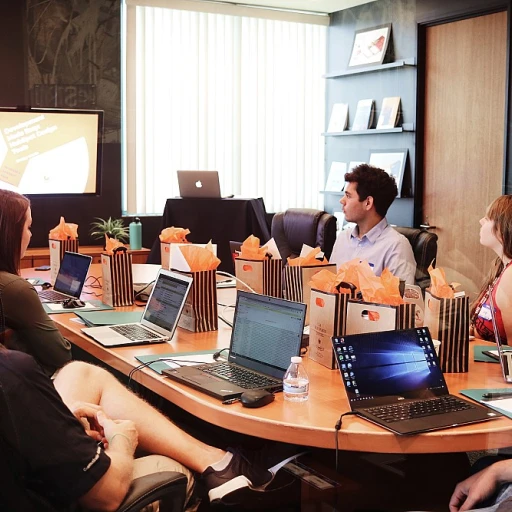
Defining Revenue per Full-Time Employee
Understanding Revenue Contribution per Employee
Revenue per Full-Time Employee (Revenue Per FTE) is a pivotal metric for understanding the relationship between a company's workforce and its revenues. It provides insights into how effectively a company is utilizing its human resources to generate income. By dividing the total revenue by the number of full-time equivalent employees, businesses can assess their operational efficiency.
This metric is particularly vital for companies in sectors like SaaS, where employee output directly impacts growth. For instance, companies can monitor recurring revenue trends and net revenue patterns to optimize their strategies. As organizations aim to maximize efficiency, understanding how each FTE contributes to revenue becomes crucial.
Efficient use of employees translates into greater revenue generation, making this metric an essential indicator for businesses aiming to enhance their operational strategies. It's also a reflection of how well a company's business model scales as it grows in size.
Organizations can leverage data to pinpoint areas for improvement, ensuring that employee contributions align with company goals. By examining this metric alongside other operational data, companies can make informed decisions about staffing and investment in talent development.
Overall, companies aiming for sustainable growth and increased efficiency should keep a close eye on revenue per FTE, as it provides critical insights that drive long-term success.
The Role of CHRO in Enhancing Revenue per FTE
Maximizing Impact with Strategic Leadership
A Chief Human Resources Officer (CHRO) plays a pivotal role in driving revenue optimization within an organization, significantly impacting the revenue per full-time employee (FTE). By harnessing their expertise in human capital management, CHROs can strategically influence the growth and operational efficiency of the business. The importance of aligning HR practices with revenue goals is increasingly recognized. CHROs are tasked with overseeing strategies that enhance the productivity of employees, ensuring alignment with the company's overall objectives. This focus not only impacts net revenue but also facilitates improved metrics such as ARR (Annual Recurring Revenue) per FTE, which are crucial for SaaS companies or any business model reliant on recurring revenue. To truly optimize revenue per employee, CHROs must be adept at integrating data-driven strategies, ensuring that employee productivity and company efficiency are prioritized. Through diligent analysis of total revenue data, they can identify trends and implement programs that support growth. This involves improving talent acquisition processes, reducing turnover costs, and enhancing employee engagement, all of which reflect on the number of FTEs capable of propelling a company forward. Moreover, taking a proactive approach in navigating the ever-evolving business landscape is critical. Mastering change management in HR strategies is an essential component of a CHRO's capability to lead effectively in this regard. Through strategic initiatives and targeted interventions, CHROs ensure that their teams are not only contributors to but drivers of the company's success in terms of revenue generation. For more insights on navigating change effectively, mastering change management in HR strategies offers valuable perspectives that can elevate your strategic initiatives.Strategies to Improve Revenue per FTE
Optimizing Revenue Per FTE
Improving the revenue per full-time employee (FTE) is essential for maximizing the efficiency of any business, especially in modern organizations that aim to achieve significant growth. HR leaders, in particular, play a pivotal role in achieving this by instituting effective strategies that align with the organization’s operational goals.
Firstly, aligning talent management with business objectives ensures that every employee contributes effectively towards the company's total revenue. Having a workforce strategy that identifies and develops high-value employees will result in increased revenue generation per FTE.
Strategic workforce planning is another fundamental strategy. It involves understanding the number of full-time employees necessary for optimal performance and matching them with the business demand. By analyzing data on recurring revenue, companies can better manage employee workloads and ensure operational efficiency without unnecessary cost increases.
- SaaS Metrics: For SaaS companies focused on maximizing their ARR, measuring metrics such as ARR per employee and growth in net revenue are crucial. Monitoring these metrics closely helps identify inefficiencies that can be addressed through strategic interventions.
- Data-Driven Insights: Businesses should leverage data analytics to optimize the revenue FTE metric. By calculating revenue full time and equivalent FTE, firms can adjust resource allocation strategies to enhance performance outcomes sustainably.
Finally, promoting a culture of continuous improvement within the workforce can dramatically improve revenue efficiency. Regular training, feedback mechanisms, and robust knowledge-sharing platforms contribute to a workforce that drives business growth through enhanced productivity.
Challenges in Measuring Revenue per FTE
Obstacles in Evaluating FTE-based Revenue
Calculating revenue per full-time employee (FTE) is a valuable metric for determining a company's operational efficiency. However, it’s not always a straightforward process. Several challenges can emerge when companies attempt to measure this particular metric accurately.
- Data Collection and Integration: Accurately tracking the number of FTEs while ensuring that figures such as total revenue and employee costs are current can be time-consuming. Many businesses face a disconnect between various departments, leading to discrepancies in data across the system. This disconnection can have significant implications on derived metrics such as revenue per FTE.
- SaaS Company Dynamics: Because software-as-a-service (SaaS) companies typically rely on annual recurring revenue (ARR) rather than one-time sales, it can obscure true employee productivity levels. Translating recurring revenue to meaningful employee output can present unique challenges.
- Non-Linear Growth: As a company grows in size, the cost structures, along with employee roles and contributions, may shift. In turn, the impact on revenue per FTE can become convoluted. Understanding these shifts and accounting for them requires nuanced analysis and regular reviews.
- Role Distribution: The diversity in employee roles often means that contributions to the bottom line cannot be uniformly measured. An equivalent FTE measure may be simplified, failing to take into account the varied revenue impacts of different roles within the organization.
- External Factors: Changes in market conditions and competitive landscapes can affect revenue generation, making it challenging to isolate factors connected to internal operational practices. Companies must remain vigilant of broader economic shifts that may distort individual metrics, including FTE-based revenue insights.
Given these complexities, integrating a robust analytics framework that regularly evaluates these metrics against organizational changes is crucial. Companies must ensure their data integration processes align with their strategic goals to accurately reflect their business efficiency through the lens of revenue per FTE.
Case Studies: Successful CHRO Strategies
Proven Approaches and Real-World Examples
Examining the actions of forward-thinking CHROs and their strategies can provide invaluable insights into optimizing revenue per full-time employee within an organization. Here, we explore several case studies that highlight successful approaches in driving efficiency, boosting recurring revenue, and enhancing overall business growth.- SaaS Company Streamlines Operations
A leading SaaS company focused on operational efficiency by implementing a robust data collection and analysis strategy. By calculating critical metrics such as ARR per employee and net revenue contributions, the firm identified underperforming sectors. As a result, they reallocated resources and adjusted roles within the company to better align with their goals, leading to a significant increase in revenue generated per full-time employee. - Employee Upskilling Initiatives
A mid-sized company undertook a comprehensive upskilling program aimed at enhancing employee capabilities and efficiency. The CHRO led this initiative by introducing targeted training programs that significantly increased the number of FTE equivalents proficient in key areas. This strategic focus on employee growth not only reduced operational costs but also improved the company's total revenue per employee metric. - Optimizing SaaS Metrics for Company Growth
Another example comes from a SaaS company that diversified its ARR streams by developing new products and services. In collaboration with the CHRO, the company invested in strategic hires that brought in diverse skillsets and innovative ideas, enabling them to rapidly adapt to market trends. The increase in the number of full-time employees skilled in these areas was pivotal in driving sustainable growth and improving the company's revenue full-time employee ratio.












